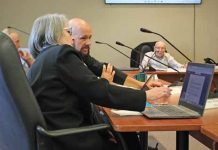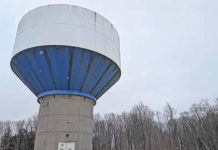After Dysart et al council rubber stamped its 2025 budget Jan. 10, implementing a 4.64 per cent levy increase for ratepayers, mayor Murray Fearrey said he felt the township’s elected officials had done a good job of tightening the belt for the year ahead.
Operational costs are slated to rise about 9.5 per cent this year, up to $18.8 million from $17.2 million in 2024, while capital expenditures increased about 11.3 per cent – $8.1 million this year compared to almost $7.3 million last year.
The end result is an increase of approximately $15.61 per $100,000 of assessment for residential ratepayers, $23.14 for commercial, and $26.81 for industrial.
“I’d say this budget is needs’ only – with the way costs have increased, we’re starting behind the eight ball before we’ve even started to talk priorities,” Fearrey told The Highlander following the meeting. “Considering where we started, I’m happy. Nobody wants to see an increase in these times, but it’s just unavoidable with the cost of everything. With having to replace equipment, taking on new contracts – some of those expenses are 50 per cent more than they were even two years ago. It’s hard to deal with.”
According to the Bank of Canada, inflation has gone up 16.91 per cent since 2020. Fearrey said that’s largely a result of the COVID-19 pandemic. While things have cooled over the past 12 months, the mayor said the township is seeing little reprieve.
One answer, he suggested, would be for the Municipal Property Assessment Corporation (MPAC) to update its home valuations for the first time in almost a decade. People’s tax bills are calculated using assessed property values and multiplying it by the combined municipal and education tax rates.
The last update was in 2016, when the typical home in Haliburton was assessed at $193,000. According to the Lakeland Association of Realtors, average property values had climbed to $589,438 by December 2024 – a 205 per cent increase.
Fearrey said when homes are reassessed, he anticipates the municipality’s mill rate will drop, so while the township will see some additional money, the main benefit, he believes, will be seeing ratepayers living in new builds taxed more fairly.
“Anybody who has built in the last three years, their assessments are much higher than those who had assessments done eight, nine years ago,” said Fearrey, who himself lives in a recently-constructed home on Gelert Road. “There’s a huge disparity between what some of our residents are paying. It’s really quite unfair.”
There was 2.1 per cent of assessment growth last year – meaning new properties entering the tax stream, bringing in an additional $251,000.
Where the money goes
Approximately 46 per cent of the budget, or $12.3 million, is earmarked for transportation costs.
Dysart is investing approximately $1.75 million rehabilitating portions of Redkenn, Watts, Illman and Irish Line roads, Mountain Street, Halbiem Crescent and sidewalks in the downtown in 2025, while it’s spending just under $3.5 million replacing the Redstone Brook Bridge, Barry’s Bridge, and the Head Lake Park footbridge. A further $1.4 million is being put into the municipal fleet for two new tandem truck and plows, a one-ton truck and plow, a backhoe loader, and FEL mounted snowblower.
Council also dedicated $100,000 to complete various surveys required for development at its 92-acre County Road 21 property and $280,000 for engineering and design work on the expansion of the sewage treatment plant.
Protective services come in at 16 per cent, with costs of $4.6 million – up around $700,000 from last year. Much of that is driven by a 20 per cent increase in policing costs, said treasurer Barb Swannell, and relates to a new ratified OPP contract signed last year. She said the township is receiving $365,000 in one-time funding from the province to mitigate the increase.
Environmental services are expected to cost $4.2 million (15 per cent), recreation and culture $2.6 million (9.7 per cent), general government $2.5 million (9.3 per cent), planning and development $794,000 (2.9 per cent), health services $191,000 (0.7 per cent), and social and family services $27,000 (0.1 per cent).
Municipal reserves and reserve funds are healthy, Fearrey said, with about $10.4 million in the bank. The township is taking on $4.37 million in new debt this year, taking its total liabilities to just over $7.3 million. Swannell said the township has a remaining debt capacity of 74.3 per cent, with a projected annual repayment of $805,237 this year. She said the municipality is permitted to service up to $3.1 million annually.
“I’m not worried about the debt – overall, I think the township is not in bad shape,” Fearrey added.
The budget will be presented for final approval Jan. 28.




